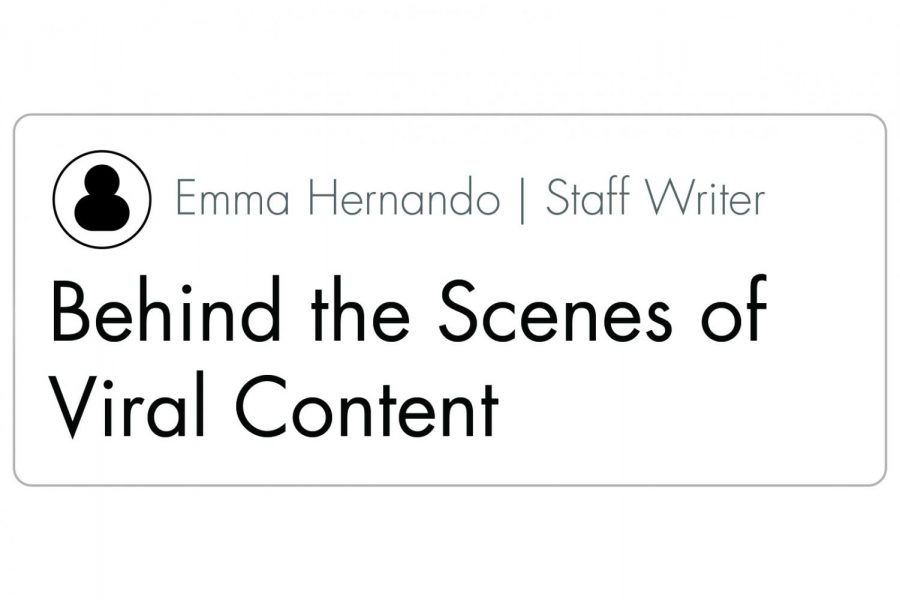Behind the Scenes of Viral Content
How much thought did you put into the last thing you retweeted, shared or direct messaged?
Odds are that in the split second between seeing content and sharing it, you didn’t consciously think of all the factors that went into that. Most people would assume that they click on content simply because they like it; however, the immense amount of time and effort marketing researchers put into in studying this process would claim otherwise. In fact, there are specific factors that influence the spread of content — widely ranging from hashtags that spark political movements like #BlackLivesMatter and #OscarsSoWhite to frivolous Buzzfeed quizzes.
In a study done by the New York Times, in which 2500 people were interviewed to determine why they shared a story online, this split-second decision to share something was examined. In the responses, they found a few key factors that influence why we share what we do: to bring valuable content to other people, to define ourselves to others, to grow and nourish relationships, to get the word out on causes we care about and to feel more involved in the world. With these factors in mind it’s easy to see why your twitter feed is as saturated with comical comments on the political climate as it is with popular Vine videos.
The high arousal of emotions such as excitement or intrigue are also what draw a click. Studies have shown that people are more likely to share content that makes them feel happy or that angers them. This content is more than just what amuses our friends, 86 percent of millennials get their news purely from social media, according to the Media Insight Project. Which means that our perception of the world is affected by what is considered shareable.
Steinhardt freshman and Youtuber, Ainura Kudaibergen, known online as Ainura K, is affected by this need to create shareable content. With 269,062 subscribers across 142 countries and 18 million total views across her two Youtube channels — one in Russian and one in English — she has felt a pressure to create content that will keep her current viewers engaged as well as achieve that elusive viral hit.
When she first went viral, by a video that got around 3 million views, it wasn’t at all what she planned.
“It was a trend of uploading your morning routine,” Kudaibergen said. “But when I uploaded mine I wasn’t expecting it to succeed.”
Since then she has formed her channel centering around topics such as fashion, photography and travel. Kudaibergen emphasizes that despite the findings of these studies, in her experience, the difficulty of going viral lies in its unpredictability.
“You can never predict what’s gonna go viral,” Kudaibergen said. “Like the content I put a lot of effort into how to edit, how to film, those videos never really reach as big of a [success] as the videos that are filmed spontaneously. I think things that aren’t planned to be viral escalate quickly.”
Kudaibergen cites the Damn Daniel video that spread on Twitter as an example of this. From her perspective, content that usually goes viral is created with very little research at all. Due to the unreliability of getting a viral hit, her main concern is to maintain the audience she already has.
“The viewers sense when you want something to spread around,” Kudaibergen said. “They see the title is clickable, they can see what you’re trying to do … You have to choose whether to have viewers that trust you or [ones that] see you just trying to go viral.”
Often this prevalence of web content solely made to go viral breeds a distrust in consumers. Rather than sparking the desired reaction, it falls into the notorious categorization of clickbait. Content creators as well as companies must make a compromise making quality content versus content that will rack up a lot of views.
“In the beginning, I was very focused on numbers and how fast they grew,” Kudaibergen said. “But overtime I realized that even though I was looking at numbers and they were growing, I didn’t enjoy the process as much. I lost interest in posting content I don’t enjoy [in the attempt to] go viral.”
While there are certain factors that seem to increase likelihood of clicks, there’s no conclusive evidence on why certain posts go viral at specific points in time. It seems companies and content creators need to continue to find the balance between giving content a clickable title and creating something worth clicking on.
So, next time you find yourself scrolling mindlessly on twitter or browsing absentmindedly through Youtube, spend a bit more time in that short second between clicking on a post and ignoring it. Maybe in your mindless decision, you’ll discover the calculated effort in something not so mindless after all.
Email Emma Hernando at [email protected].

